Abstract
1. The transient release of 86Rb from parotid slices induced by secretagogues was investigated. 2. In the absence of external Ca, only one transient response (to carbachol) could be obtained. 3. After blocking the cholinergic stimulus with atropine, a second response (to substance P) could be elicited if the slices were briefly (2 min) exposed to a Ca-containing medium. 4. The magnitude of the substance P response depended on the concentration of Ca to which the slices had been exposed. 5. An exposure to Ca of 2 min duration was found to be sufficient to restore maximal substance P responsiveness. 6. These results are interpreted to mean that the cholinergic stimulus elicited a transient 86Rb efflux response by first releasing a finite pool of cellular Ca which could be reloaded from the extracellular space by a brief (2 min) incubation in a Ca-containing medium. The magnitude of the subsequent response to substance P apparently reflects the quantity of Ca taken up by the pool. 7. A number of cationic substances antagonized the restoration by Ca of the substance P response; the rank order of potency was: La3+ = Tm3+ greater than Co2+ = Ni2+ greater than neomycin much greater than Mg2+. 8. These same substances were examined for their relative abilities to inhibit Ca binding to phosphatidylinositol-4, 5-bisphosphate; in this case the rank order of potency was: La3+ = Tm3+ greater than neomycin greater than Co2+ greater than Ni2+ = Mg2+. 9. It is concluded that the uptake process does not appear to reflect Ca binding to phosphatidylinositol-4, 5-bisphosphate.
Full text
PDF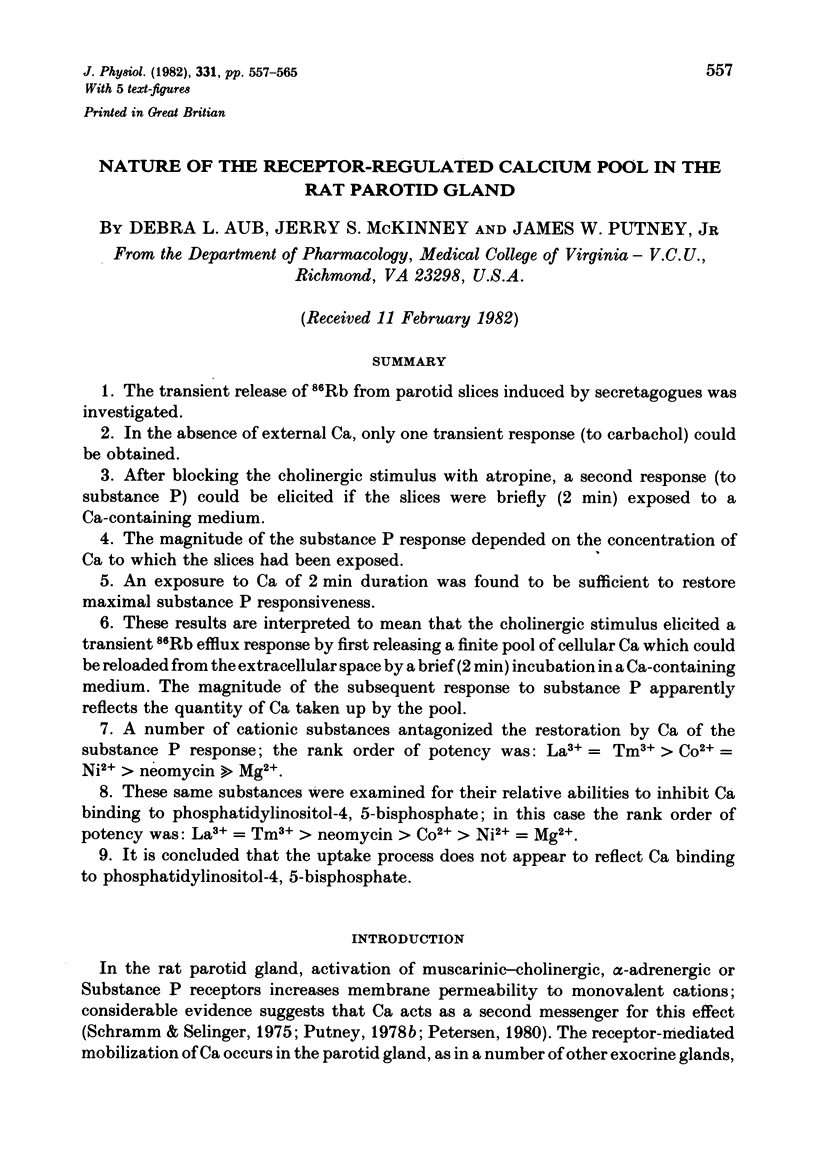
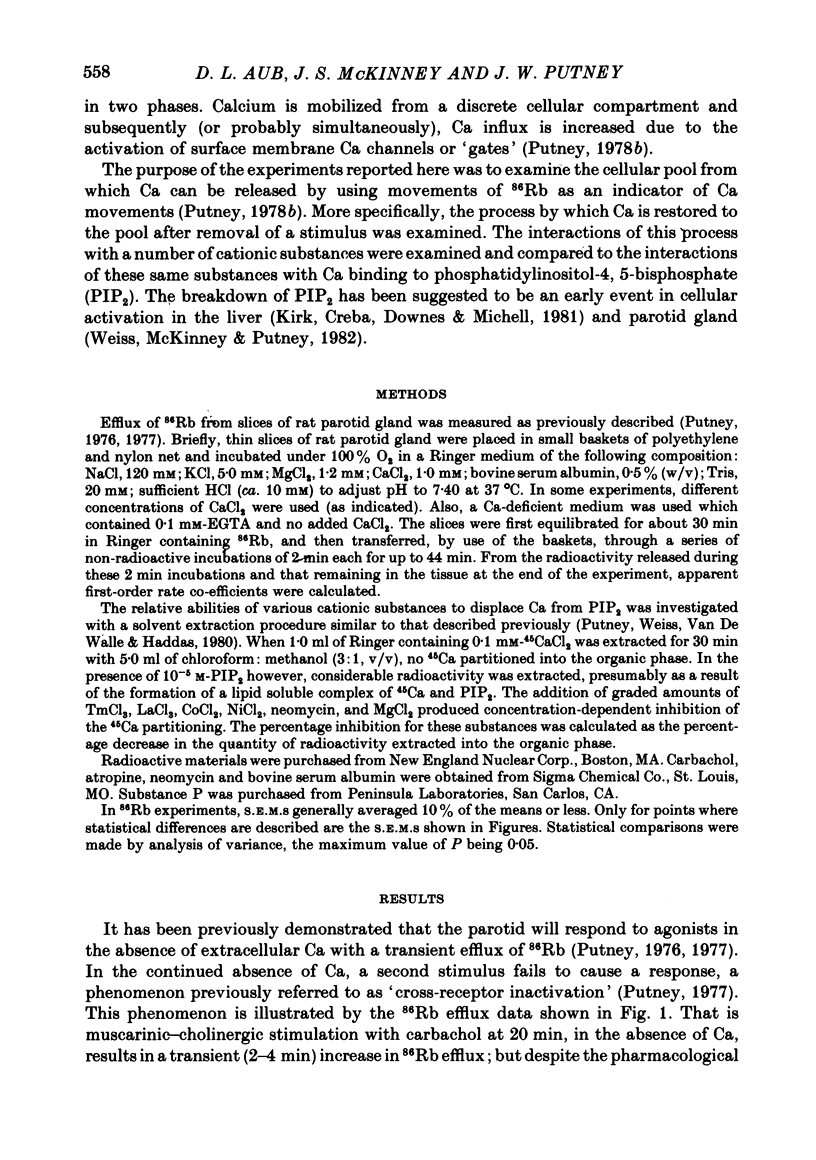
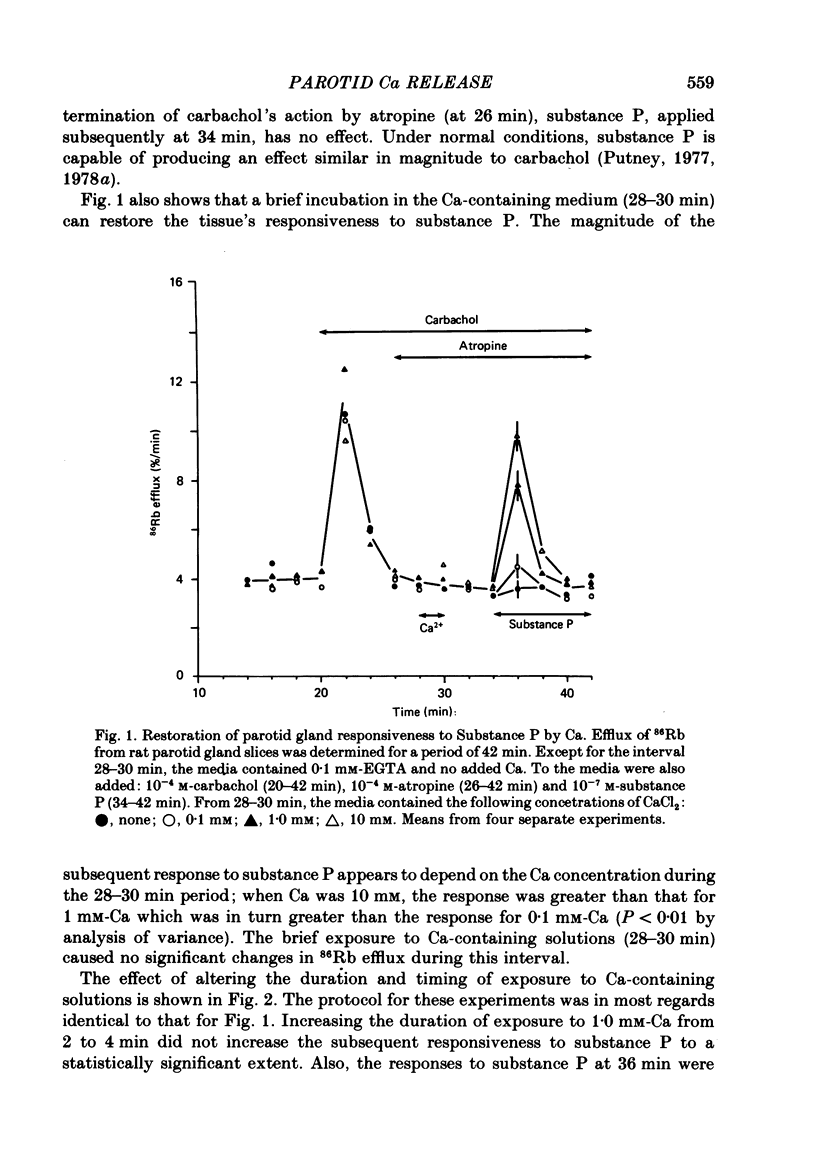
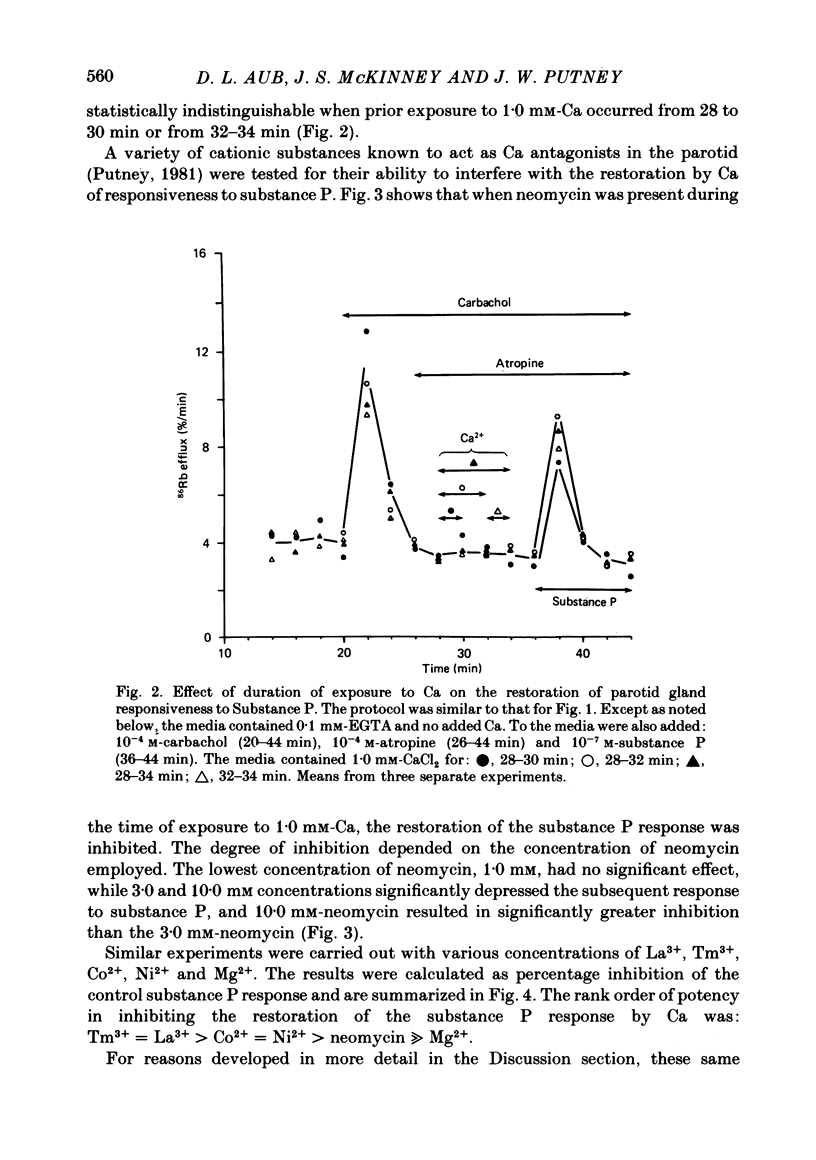

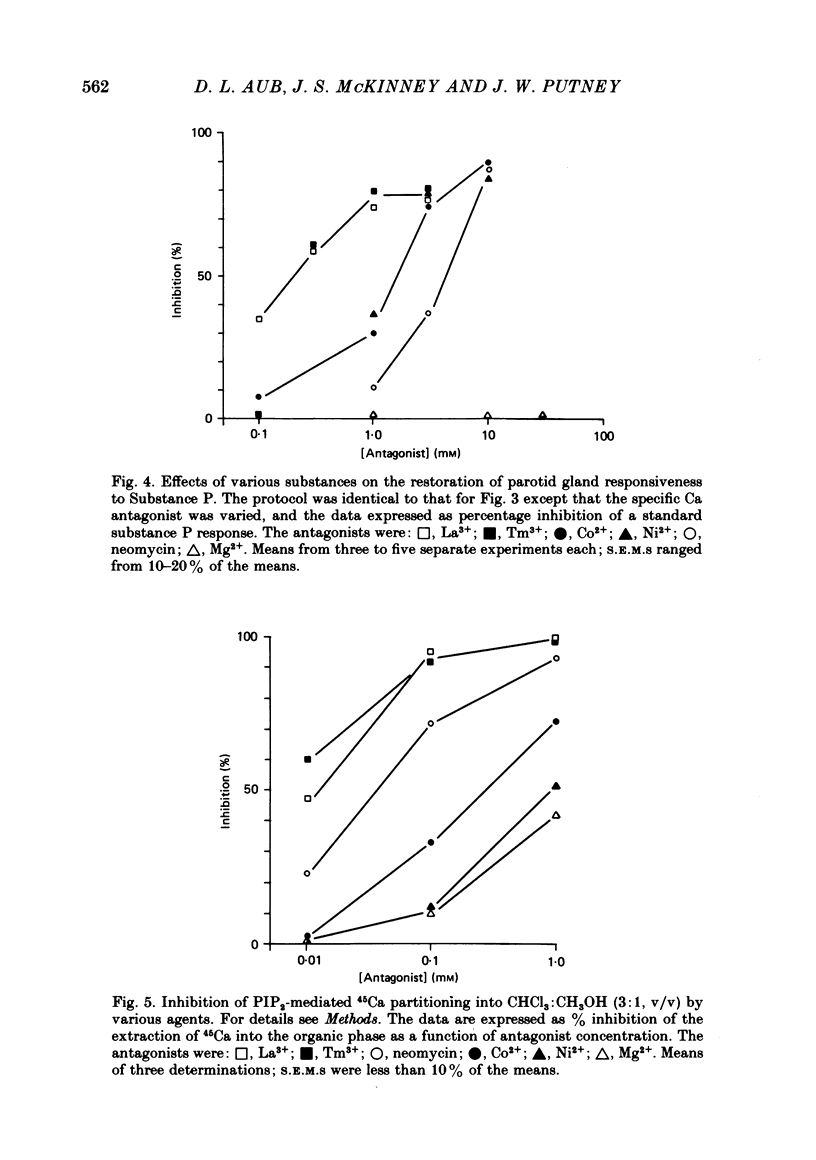

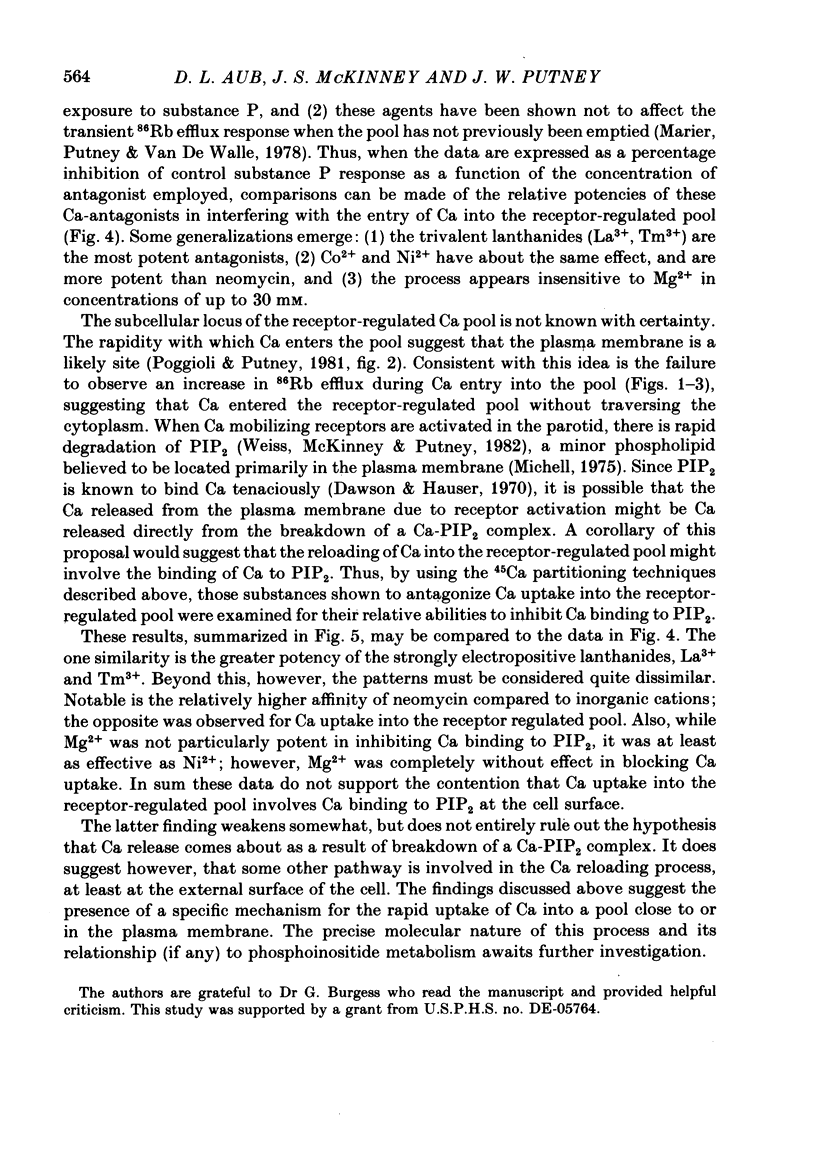
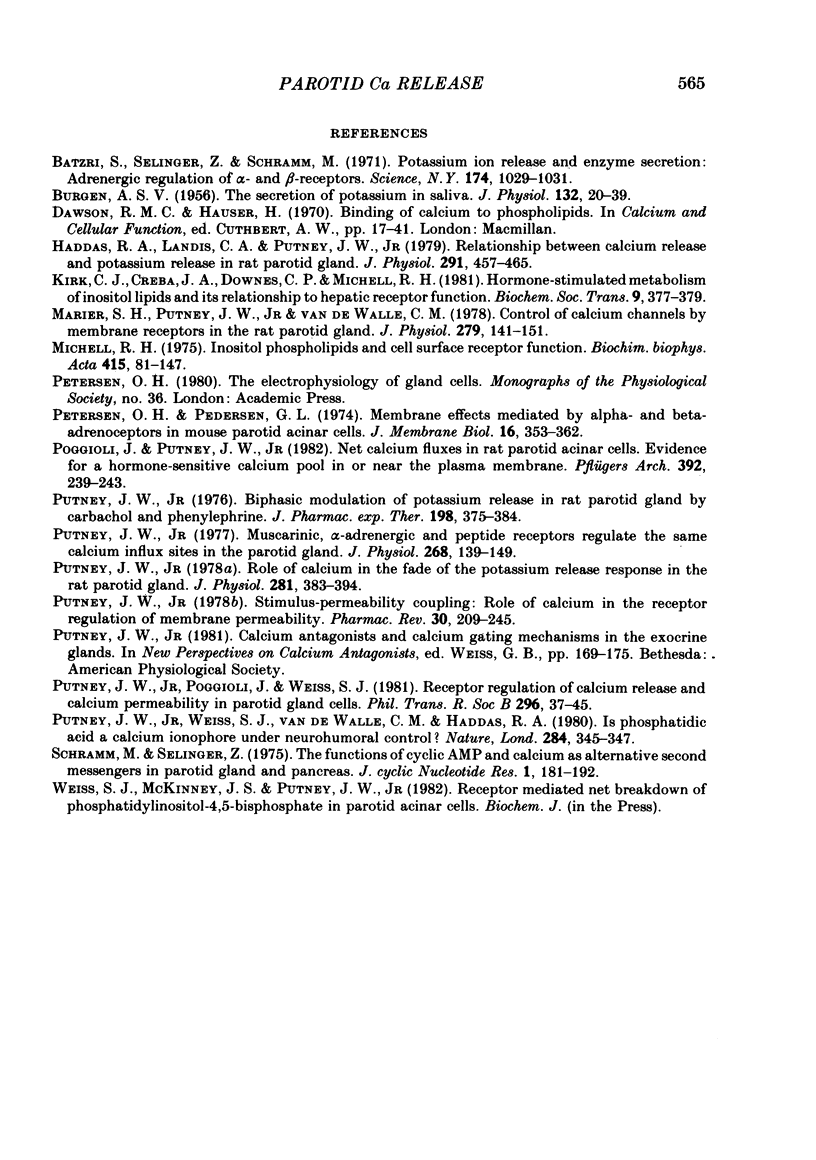
Selected References
These references are in PubMed. This may not be the complete list of references from this article.
- BURGEN A. S. The secretion of potassium in saliva. J Physiol. 1956 Apr 27;132(1):20–39. doi: 10.1113/jphysiol.1956.sp005500. [DOI] [PMC free article] [PubMed] [Google Scholar]
- Batzri S., Selinger Z., Schramm M. Potassium ion release and enzyme secretion: adrenergic regulation by alpha- and beta-receptors. Science. 1971 Dec 3;174(4013):1029–1031. doi: 10.1126/science.174.4013.1029. [DOI] [PubMed] [Google Scholar]
- Haddas R. A., Landis C. A., Putney J. W., Jr Relationship between calcium release and potassium release in rat parotid gland. J Physiol. 1979 Jun;291:457–465. doi: 10.1113/jphysiol.1979.sp012825. [DOI] [PMC free article] [PubMed] [Google Scholar]
- Kirk C. J., Creba J. A., Downes C. P., Michell R. H. Hormone-stimulated metabolism of inositol lipids and its relationship to hepatic receptor function. Biochem Soc Trans. 1981 Oct;9(5):377–379. doi: 10.1042/bst0090377. [DOI] [PubMed] [Google Scholar]
- Marier S. H., Putney J. W., Jr, Van de Walle C. M. Control of calcium channels by membrane receptors in the rat parotid gland. J Physiol. 1978 Jun;279:141–151. doi: 10.1113/jphysiol.1978.sp012336. [DOI] [PMC free article] [PubMed] [Google Scholar]
- Michell R. H. Inositol phospholipids and cell surface receptor function. Biochim Biophys Acta. 1975 Mar 25;415(1):81–47. doi: 10.1016/0304-4157(75)90017-9. [DOI] [PubMed] [Google Scholar]
- Petersen O. H., Pedersen G. L. Membrane effects mediated by alpha-and beta-adrenoceptors in mouse parotid acinar cells. J Membr Biol. 1974;16(4):353–362. doi: 10.1007/BF01872423. [DOI] [PubMed] [Google Scholar]
- Poggioli J., Putney J. W., Jr Net calcium fluxes in rat parotid acinar cells: evidence for a hormone-sensitive calcium pool in or near the plasma membrane. Pflugers Arch. 1982 Jan;392(3):239–243. doi: 10.1007/BF00584303. [DOI] [PubMed] [Google Scholar]
- Putney J. W., Jr Biphasic modulation of potassium release in rat parotid gland by carbachol and phenylephrine. J Pharmacol Exp Ther. 1976 Aug;198(2):375–384. [PubMed] [Google Scholar]
- Putney J. W., Jr Muscarinic, alpha-adrenergic and peptide receptors regulate the same calcium influx sites in the parotid gland. J Physiol. 1977 Jun;268(1):139–149. doi: 10.1113/jphysiol.1977.sp011851. [DOI] [PMC free article] [PubMed] [Google Scholar]
- Putney J. W., Jr, Poggioli J., Weiss S. J. Receptor regulation of calcium release and calcium permeability in parotid gland cells. Philos Trans R Soc Lond B Biol Sci. 1981 Dec 18;296(1080):37–45. doi: 10.1098/rstb.1981.0169. [DOI] [PubMed] [Google Scholar]
- Putney J. W., Jr Role of calcium in the fade of the potassium release response in the rat parotid gland. J Physiol. 1978 Aug;281:383–394. doi: 10.1113/jphysiol.1978.sp012429. [DOI] [PMC free article] [PubMed] [Google Scholar]
- Putney J. W., Jr Stimulus-permeability coupling: role of calcium in the receptor regulation of membrane permeability. Pharmacol Rev. 1978 Jun;30(2):209–245. [PubMed] [Google Scholar]
- Putney J. W., Jr, Weiss S. J., Van De Walle C. M., Haddas R. A. Is phosphatidic acid a calcium ionophore under neurohumoral control? Nature. 1980 Mar 27;284(5754):345–347. doi: 10.1038/284345a0. [DOI] [PubMed] [Google Scholar]
- Schramm M., Selinger Z. The functions of cyclic AMP and calcium as alternative second messengers in parotid gland and pancreas. J Cyclic Nucleotide Res. 1975;1(4):181–192. [PubMed] [Google Scholar]


